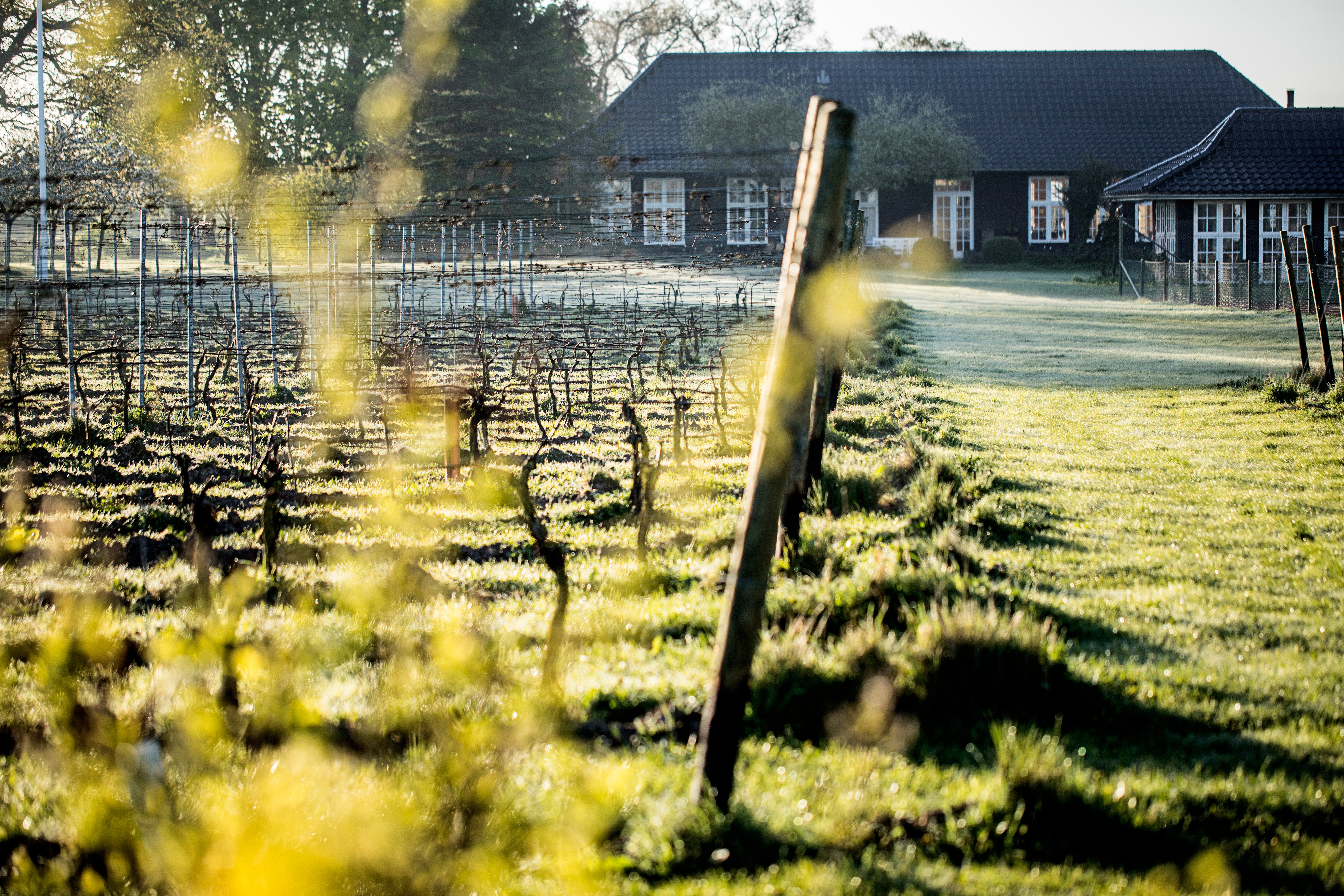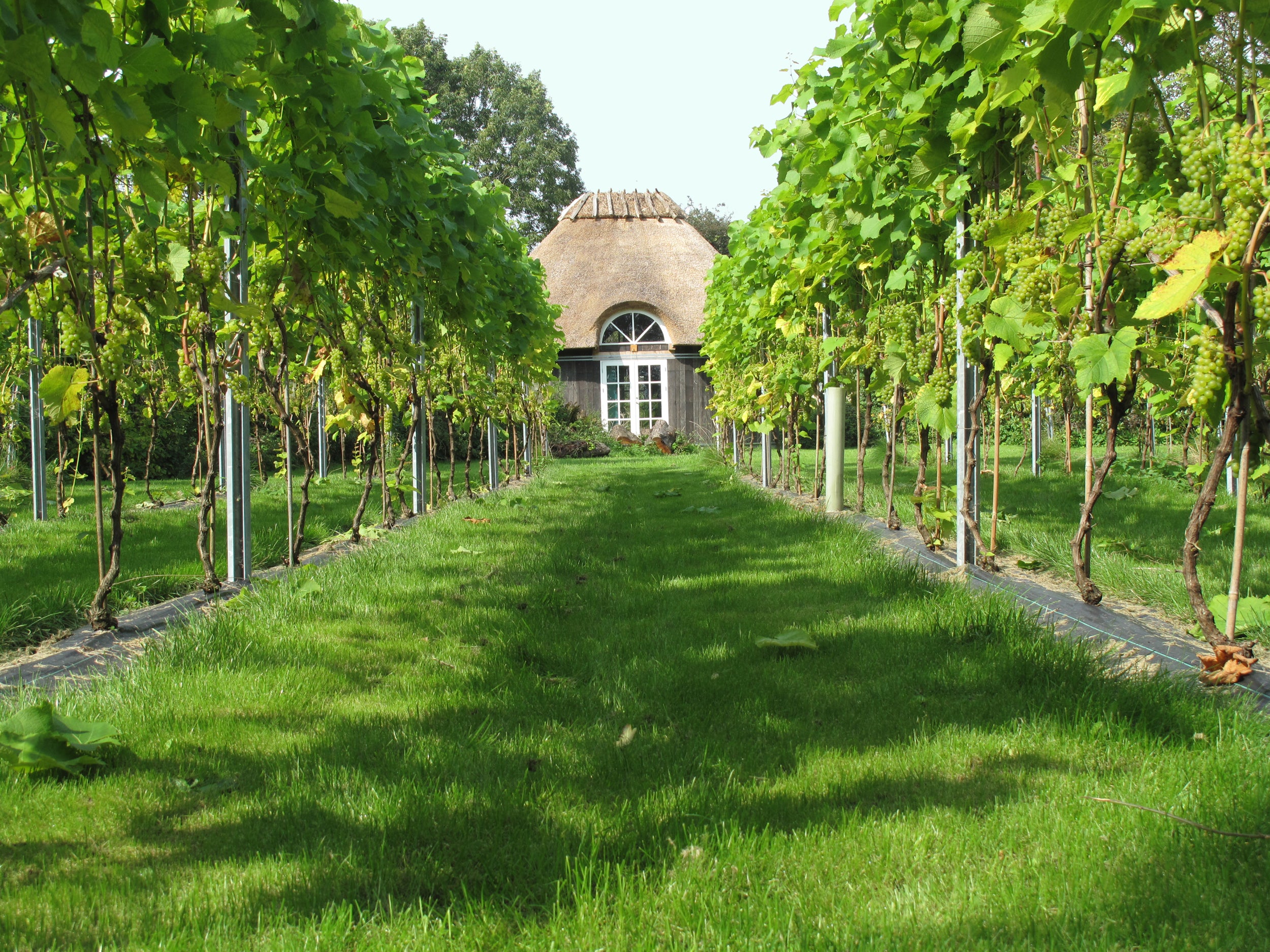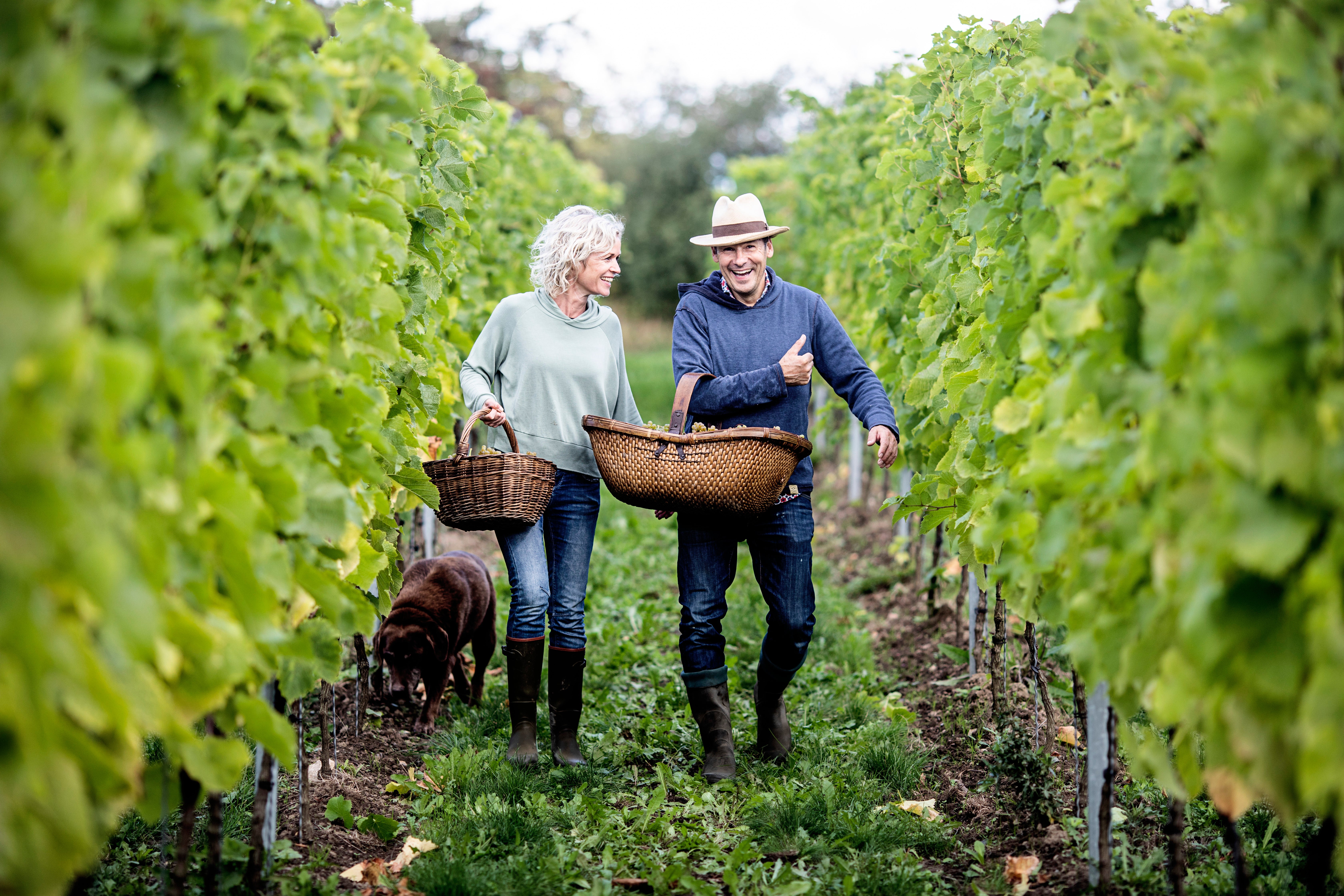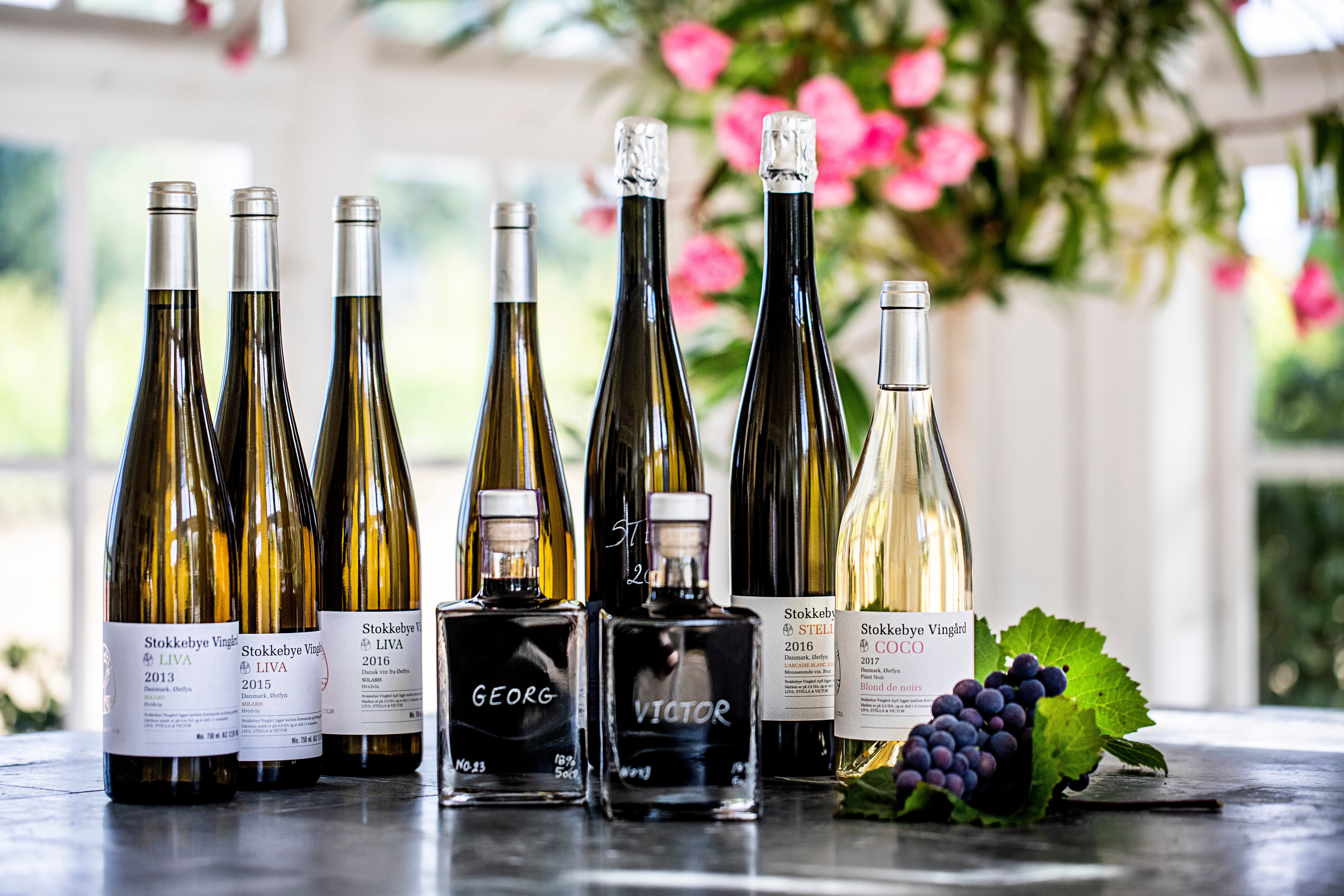Is Denmark Europe’s most sustainable wine destination?
Forget hygge and Sarah Lund’s star-patterned jumper: climate-driven wine is the next big Scandi trend, writes Mike MacEacheran

When Jacob and Helle Stokkebye set out to create their own minimal impact, organic wine label, they knew a sustainable footprint was non-negotiable. Wholly convinced it was worth the effort, they planted nine different sorts of vines in 2009, ambivalent to the cold northern climate of Funen, the island at the heart of Denmark where their 16-acre winery is based.
They ditched the harmful chemicals, adhered to a natural wine-making philosophy, and set out on a quest to create the ideal wine and become the greatest, most sustainably minded vineyard in the country. Even if, at times, it made little sense to their neighbours.
“I actually started to doubt what we were doing,” says Jacob, floating around the By Stokkebye tasting room in a rootsy sommelier’s apron. “It’s an expensive memory, for sure, but we’ve learnt from our earlier harvests and, now, here we are.”

In the Noughties, the food world went gaga for ingenious new Nordic cuisine from Denmark, a movement that stressed sustainability, hyper locality, seasonality, environmental responsibility and respect. All this got transmitted into cool food spots that hogged the spotlight in Copenhagen restaurants (namely Noma, Geranium, Amass and Kadeau) that topped the best-in-world lists.
And yet one thing was missing: Danish wine made with the same mindset. The reason? Denmark was only accepted as a commercial wine-growing area within the EU in 2000 and, excluding a handful of hobbyists, there was nothing to bottle.
Fast forward to today and how times have changed. There are now more than 100 venerable producers across the country, with the bulk concentrated along the warmer coastlines of Zealand, Funen and Jutland. Plus, the amount of wine produced year on year is growing exponentially. It could have all gone wrong, but it hasn’t, and this straight-line graph is a glimpse, perhaps, of the future of wine in Denmark – and maybe the rest of the world.
Most people still haven’t bought into the idea of Danish wine yet, but that’s our target
“Our ambition is to do for white and sparkling wine what Noma did for food,” says Jacob. “Most people still haven’t bought into the idea of Danish wine yet, but that’s our target.”
This underlines the vinicultural shift in the country, but a far more extreme factor is also at play. As the world heats up, Denmark’s cool-climate winemakers are seeing their harvests ripen faster, albeit with one or two blips along the way because of late spring frosts. Climate crisis analyses also show that plant growing seasons will be extended by one to two months on average across the country, and there is no doubt that Denmark continues to get hotter. In the past century, the temperature has risen by almost 1.5C – and there’s been a consistent rise almost every year since 1988.

“Undoubtedly, there is more high-quality wine being produced here, but at what cost?” asks Jacob. “It’s a similar story in England. So we have to be dynamic and adaptable.”
Also playing the cards they’ve been dealt are Carsten Andersen and Bente Rasmussen at Skaarupore Vingaard, a farm winery located 25 miles south near the coastal town of Svendborg. The biodynamic and experimental wine-makers – the first in Denmark – have set up a tasting room, shop and cafe in two enormous thatched barrels and, now with 2,500 tangled vines for their white and floral rose wines, they’ve built a chemical-free infrastructure to take care of the land, improve microbial life and preserve root health.
“In biodynamic wine-making, you have to think about the combination between the plant and the soil, so we continue to experiment,” says Carsten, as he wanders through vines stocked with solaris and rondo, Denmark’s second-most widespread cultivar. “Here we have lots of weeds, but that’s a bonus – it creates sugar to feed the vines.”
Undoubtedly, there is more high quality wine being produced here, but at what cost?
Their ultimate goal, Bente says, is bigger than profit or a high yield: it’s to respect nurture the plants and cornucopia of insects and birds in the surrounding orchards. “It’s a release for the soul,” she adds.
Other winemakers in the surrounding meadowlands, including Kimesbjerggaard Vingaard overlooking the island of Lyo and Svendborg Vingard (now dabbling in farm-foraged herbal schnapps), also buy into the same sustainable philosophy. But being this good can be a battle. With increasing temperatures, the vintners are starting to see more seasonal rainfall, with deluges affecting recent grape harvests.

“That might mean a move to different sorts of grapes,” says Carsten. “Pinot noir, or maybe re-isling as these cultivars tend to grow better in wetter conditions.”
In their world, there might be hard decisions ahead. But maybe the appeal of sustainable Danish wine, made by vintners doing the right thing for the planet, will trump all else.
Travel essentials
Getting there
Travelling flight-free
You can reach Denmark from the UK without flying in several ways: catch the ferry from Harwich to the Hook of Holland, get the metro and train to Amsterdam and take onward trains from there to Odense; or get the Eurostar from London to Brussels, stay overnight and catch an onward train to Odense the following day.
Travelling by air
Ryanair, British Airways, Norwegian, SAS and easyJet all fly direct from the UK to Odense.
Staying there
Set amid rolling hills, Broholm Castle dates back to the 12th century and features a moat, watermill and lake.
More information
Funen’s vineyards and tasting rooms open on a seasonal basis. To book a tasting or tour, contact By Stokkebye, Skaarupøre Vingaard, Kimesbjerggaard Vingaard, or Svendborg Vingård for dates and rates.
Mike MacEacheran was hosted by Visit Denmark.
Join our commenting forum
Join thought-provoking conversations, follow other Independent readers and see their replies
Comments